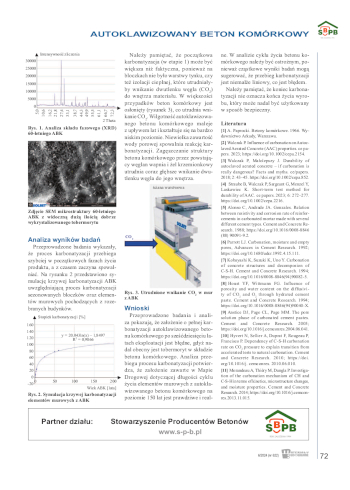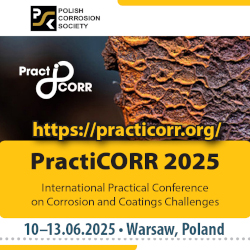dr inż. Paweł Walczak, SOLBET Sp. z o.o.
Adres do korespondencji: Ten adres pocztowy jest chroniony przed spamowaniem. Aby go zobaczyć, konieczne jest włączenie w przeglądarce obsługi JavaScript.
Autoklawizowany Beton Komórkowy (ABK) od początku swojego istnienia jest postrzegany jako materiał ekologiczny i uniwersalny. Można go produkować z wykorzystaniem surowców wtórnych, jak np. technologie popiołowe [1], a także w tzw. cyklu zamkniętym, natomiast materiał pochodzący z rozbiórki domów w technologii ABK może być z powodzeniem ponownie wykorzystany w produkcji. Obecnie wielu producentów decyduje się na opracowanie deklaracji środowiskowych (EPD) swoich produktów.
Literatura
[1] A. Paprocki. Betony komórkowe. 1966. Wydawnictwo Arkady, Warszawa.
[2] Walczak P. Influence of carbonation on Autoclaved Aerated Concrete (AAC) properties. ce papers. 2023; https://doi.org/10.1002/cepa.2154.
[3] Walczak P, Małolepszy J. Durability of autoclaved aerated concrete – if carbonation is really dangerous? Facts and myths. ce/papers. 2018; 2: 43–45. https://doi.org/10.1002/cepa.852.
[4] Straube B,Walczak P, Sargeant G, Menzel Y, Laskawiec K. Short-term test method for durability of AAC. ce papers. 2023; 6: 272–277. https://doi.org/10.1002/cepa.2216.
[5] Alonso C, Andrade JA. Gonzales. Relation between resistivity and corrosion rate of reinforcements in carbonated mortar made with several different cement types. Cement and Concrete Research. 1988; https://doi.org/10.1016/0008-8846 (88) 90091-9.2.
[6] Parrott LJ. Carbonation, moisture and empty pores, Advances in Cement Research. 1992; https://doi.org/10.1680/adcr.1992.4.15.111.
[7] Kobayashi K, Suzuki K, Uno Y. Carbonation of concrete structures and decomposion of C-S-H. Cement and Concrete Research. 1994; https://doi.org/10.1016/0008-8846(94)90082-5.
[8] Houst YF, Wittmann FG. Influence of porosity and water content on the diffusivity of CO2 and O2 through hydrated cement paste. Cement and Concrete Research. 1994; https://doi.org/10.1016/0008-8846(94)90040-X.
[9] Anstice DJ, Page CL, Page MM. The pore solution phase of carbonated cement pastes. Cement and Concrete Research. 2005; https://doi.org/10.1016/j.cemconres.2004.06.041.
[10] Hyvert N, Sellier A, Duprat F, Rougeau P, Francisco P. Dependency of C-S-H carbonation rate on CO2 pressure to explain transition from accelerated tests to natural carbonation. Cement and Concrete Research. 2010; https://doi. org/10.1016/j. cemconres. 2010.06.010.
[11] MorandeauA, ThiéryM,Dangla P. Investigation of the carbonation mechanism of CH and C-S-Hin terms of kinetics,microstructure changes, and moisture properties. Cement and Concrete Research. 2014; https://doi.org/10.1016/j.cemconres. 2013.11.015.
Materiały Budowlane 6/2024, strona 71-72 (spis treści >>)

































